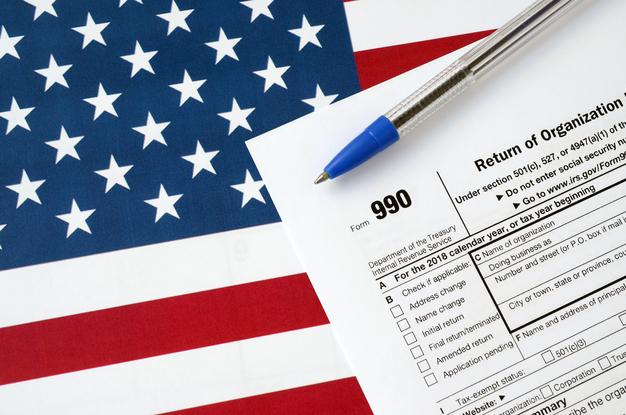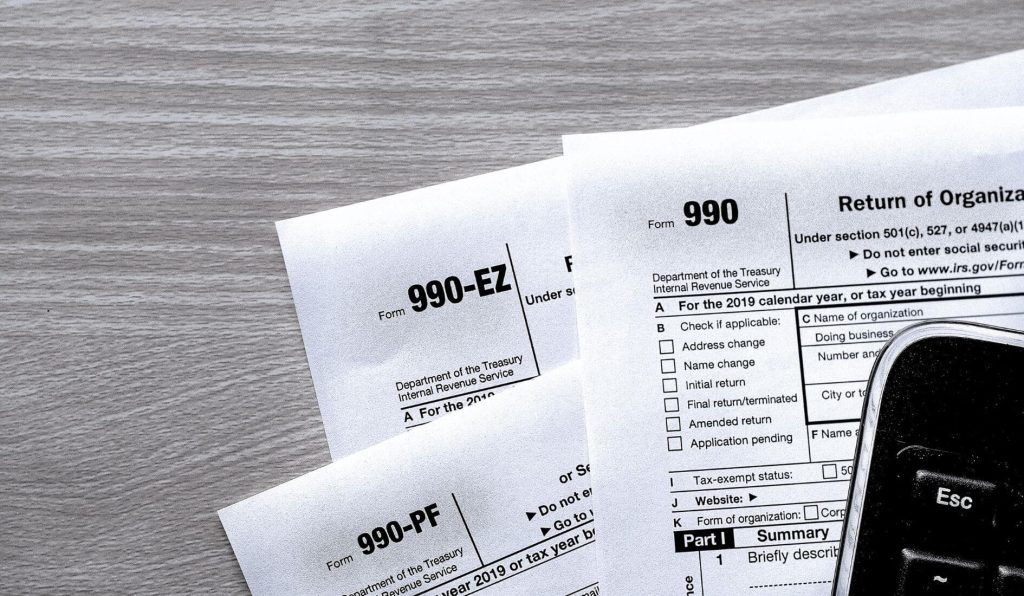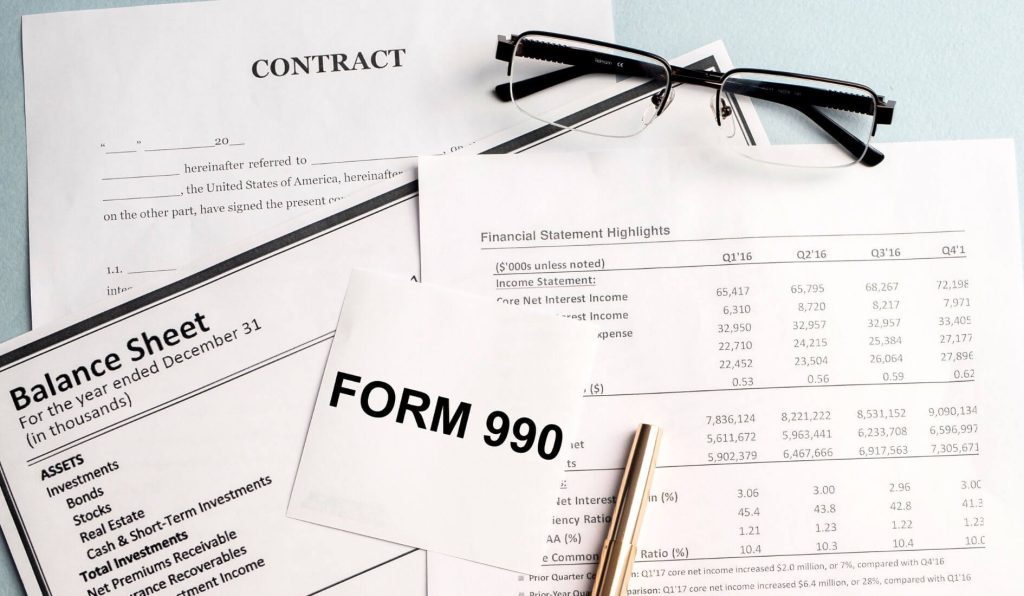Learn about E-filing Form 990 For Nonprofits!

Do you have gross receipts of $200,000 or more? Or total assets of $500,000 or more under your company’s name. In any case, you have to fill out form 990.
At the same time, public charities, private nonprofit bodies, and other selected non-profits must file Form 990. But why are we discussing the topic today?
Filing 990 returns can be a long and confusing process for nonprofits. However, it’s something that nonprofits shouldn’t miss out on to stay compliant with the IRS.
Here is everything you need to know about form 990 and its impact on your organization.
What is a 990 and why is it important?
A form 990 series return is a nonprofit tax return filed by tax-exempt organizations annually to report information on your organization’s revenue, expenses, assets, liabilities, and key employees.
The IRS uses this information to keep tabs on nonprofits and other tax-exempt organizations’ activities and finances, preventing the organizations from abusing their exempt status or taking advantage of the system.
It is also important to allow the public access to this information so they can research your staff, program service, and other things relating to your organization.
Choosing which form to file
There are a variety of forms in the 990 series. The one your organization must file will depend on the size and type of your organization as well as the year’s gross receipts and assets.
- Form 990-N intending for any organizations which have gross receipts of $50,000
- Form 990-EZ is intended for organizations that have a gross receipt of $200,000 along with assets of $500,000
- Form 990 is intended for organizations with gross receipts≥ $200,000 or assets ≥ $500,000
- Form 990-PF is intended for private foundations
- Form 990-T is intended for organizations that earn $1,000 of unrelated business income during their tax year
If your organization qualifies to file Form 990-N, you can choose to file either 990-EZ or 990 instead. Likewise, if you qualify to file Form 990-EZ, you can elect to file 990 instead.
On the other hand, Private foundations should file Form 990-PF regardless of gross receipts.
Parts of Form 990 You Should Know of

The first part of Form 990 is a summary. It is a perception of the mission, activities, and essential financials, like the company’s annual returns and revenue rate.
Secondly, you have the signature block. Here, you must write the names of officers and directors in your company. It is followed by a statement of your “Program Service Accomplishments.” It’s nothing but a description of the activities and outcomes achieved by your company.
The above are the first three primary parts you should know of. Meanwhile, there are nine more steps. I am sharing brief details of the steps here:
- You need a summary of schedules and extra forms (based on the nature of your business)
- A detailed record of your hierarchy structure, management policies, and other financial disclosures.
- The salary details of the executives and primary employees
- All details of the revenue sources and probable revenue projections
- Projection of costs like program services, fundraising, and management
- Summary of the current assets and liabilities
- Explanation of how you reconcile net holdings with your financial statements
- Ensure that the financials meet the necessary accounting standards
What information will you need?
- Form 990 will ask for a variety of information about your organization. You may want to keep the following details handy when filing.
- Organization name, EIN, address, and phone number
- Details on largest program service accomplishments
- Financial information such as revenue, expenses, assets, and liabilities
- Other IRS filings and tax compliance
- Information of officers, directors, trustees, key employees, and independent contractors
Finding your Due Date
Most 990 forms are due on the 15th day of the 5th month after the end of the organization’s tax year. For organizations that follow a calendar tax year, this means that the deadline for form 990 is May 15th.
If the deadline falls on a weekend or a holiday, it will be pushed to the next business day.

Avoiding Penalties
The IRS reserves the right to impose penalties on any organization that fails to file a 990 return by its deadline. This is also applicable to organizations that provide incorrect or incomplete information. Therefore, it is extremely important to stay on top of your organization’s due date and information!
Depending on the organization’s gross receipts, the penalty may vary. For organizations with gross receipts below $1,129,000, the penalty will be $20 per day past the deadline. This cannot exceed $11,000 or 5% of the organization’s gross earnings, whichever is less.
For organizations with gross receipts above $1,129,000, the IRS will impose a penalty of $110 per day with a maximum of $56,000.
Filing Form 990-T late is not allowed. You may need to pay a fine of 5% extra on the unpaid tax every month.
The minimum penalty for a Form 990-T delayed more than 60 days is the tax due or $435, whichever is smaller. The maximum penalty is 25% of the unpaid tax.
Filing a late Form 990-N will not result in a penalty, but the IRS will send a reminder.
Related Resource: What Is IRS Form 4797? When To File 4797?
How to file 990 forms
Starting from the tax year 2019 (June), the IRS requires nonprofits and tax-exempt organizations to file the 990 forms electronically.
So, it’s important to get started with an IRS-authorized and trustworthy e-file provider to ensure the accurate and hassle-free filing of your 990 returns.
Remember, you must file form 990 on the 15th of May. It is the 15th day of the 5th month after your company’s accounting period ends.
Secondly, I feel it is better to file your Form 990 online. The steps are simple and it takes less time to do that. Enter the details I discussed earlier. Review the data and the data summary. Then, transmit the same data to the IRS.
Lastly, I want to inform you about Schedule B of Form 990. Schedule A requires you to document the usual info which we discussed. However, Schedule B needs you to precisely disclose the donors who contributed more than $5000.
Common Mistakes to Avoid

I find most of the companies making these basic errors while filing for Form 990:
1. They fail to provide accurate financial data
2. They insert their financial data in incorrect categories
3. Meanwhile, another problem is incomplete disclosures regarding compensation
4. Lastly, some people don’t select the correct version of the form that is compatible with their business
Conclusion:
Although filing a Form 990 return is daunting, knowing the basics can help ease your experience.
If you keep your organization’s information handy while filing and meet your deadline, your organization will remain in good standing with the IRS.
Read Also:










